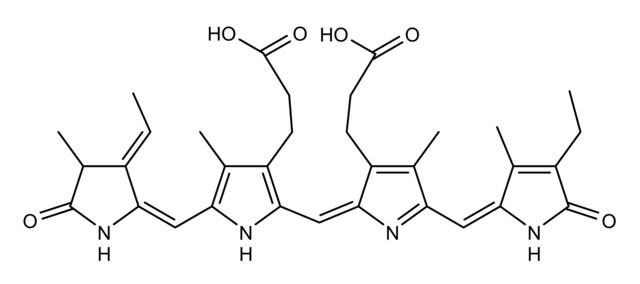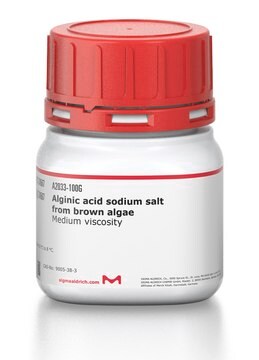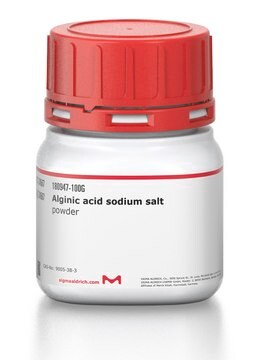A7472
Allophycocyanin
suspension, 4 mg/mL
Sinonimo/i:
APC
Autenticatiper visualizzare i prezzi riservati alla tua organizzazione & contrattuali
About This Item
Prodotti consigliati
Forma fisica
suspension
Livello qualitativo
PM
104 kDa
Composizione
Suspension in 60% saturated Ammonium Sulfate and 50 mM Potassium Phosphate, pH 7.0
Concentrazione
4 mg/mL
Colore
blue
λmax
645-655 nm
applicazioni
diagnostic assay manufacturing
hematology
histology
Condizioni di spedizione
wet ice
Temperatura di conservazione
2-8°C
Applicazioni
Phycobiliprotein exhibiting exceptional absorbance and fluorescence characteristics due to a lack of susceptibility to internal and external fluorescence quenching. Ideal for highly sensitive studies in flow cytometry and immunoassays.
Azioni biochim/fisiol
Allophycocyanin is a pigment which allows the energy trapped by phycobiliproteins to be transferred to the chloroplast lamellae.
Stato fisico
4 mg/mL solution in 60% saturated ammonium sulfate and 50 mM potassium phosphate
Codice della classe di stoccaggio
11 - Combustible Solids
Classe di pericolosità dell'acqua (WGK)
WGK 3
Punto d’infiammabilità (°F)
Not applicable
Punto d’infiammabilità (°C)
Not applicable
Choose from one of the most recent versions:
Possiedi già questo prodotto?
I documenti relativi ai prodotti acquistati recentemente sono disponibili nell’Archivio dei documenti.
Energy transfer in phycobilisomes from phycoerythrin to allophycocyanin.
Gantt E and Lipschultz CA
Biochimica et Biophysica Acta, 292, 858-861 (1973)
Margit Kaldmäe et al.
Protein science : a publication of the Protein Society, 28(6), 1024-1030 (2019-03-31)
Biotechnological applications of protein complexes require detailed information about their structure and composition, which can be challenging to obtain for proteins from natural sources. Prominent examples are the ring-shaped phycoerythrin (PE) and phycocyanin (PC) complexes isolated from the light-harvesting antennae
Erica D'Aguanno et al.
Life (Basel, Switzerland), 5(1), 969-996 (2015-03-21)
How did primitive living cells originate? The formation of early cells, which were probably solute-filled vesicles capable of performing a rudimentary metabolism (and possibly self-reproduction), is still one of the big unsolved questions in origin of life. We have recently
Il team dei nostri ricercatori vanta grande esperienza in tutte le aree della ricerca quali Life Science, scienza dei materiali, sintesi chimica, cromatografia, discipline analitiche, ecc..
Contatta l'Assistenza Tecnica.





